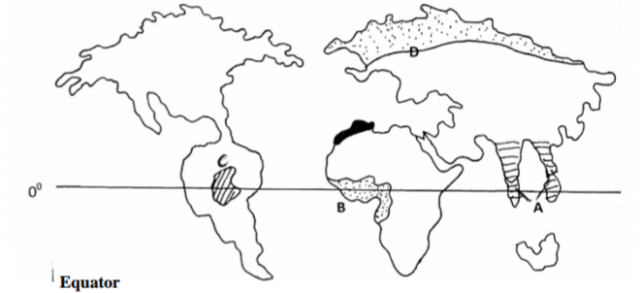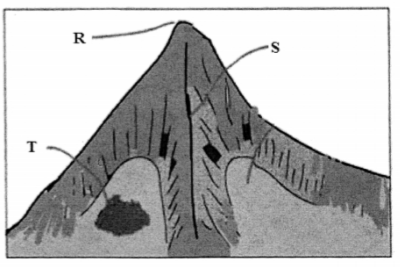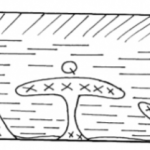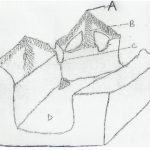KNEC KCSE Geography Paper 1 – 2014 Homa-Bay Mock
2014 Homa-Bay Mock
Geography Paper 1
SECTION A (25 Marks)
Answer all questions in this section
(a) Differentiate between vent eruption and fissure eruption (2mks)
(b) Name three intrusive volcanic features (3mks)
5 marks
(a) What is a longitude? (2mks)
(b) What is the longitude of station X when it is 8.00am while in Nairobi at longitude 37oE the time is 12.00 noon? (3mks)
5 marks
(a) State three causes of earth movements (3mks)
(b) Name two main earthquake zones in the world (2mks)
5 marks
(a) State three conditions necessary for the development of a karst scenery (3mks)
(b) Give two reasons why there are a few settlements in karst landscape (2mks)
5 marks
(a)Name three types of coral reefs (3mks)
(b) What are the benefits of coral reefs in the areas they have developed? (2mks)
5 marks
SECTION B (75 Marks)
Answer question 6 and any other two questions from this section.
Study the map of Karatina sheet 121/3, scale 1:50,000 provided and answer the following questions
(a)(i) What was the magnetic declination of the map as at January 1992? (1mk)
(ii) Give the latitudinal and longitudinal extent of the mapped area. (2mks)
(b) (i) Apart from contours, name one other method used to show relief in the mapped area (1mk)
(ii) Calculate the area of Mt. Kenya forest reserve within Kirinyaga District shown in the
map. Give your answer in square kilometers (2mks)
(c) (i) Apart from the houses, name two human made features in grid square 8755 (2mks)
(ii) Assume that four people live in each house in the grid square 8755, calculate
population density (2mks)
(d) Describe the flow of river Sagana (3mks)
(e) (i)Using evidence from the map, identify two farming activities taking place in the
mapped area (2mks)
(ii) Explain three factors which have influenced any one of the farming activities identified
in(e) (i) above (6mks)
(f) Briefly explain how the following factors have influenced the distribution of settlements
in the mapped area
(i) Forest Reserve (2mks)
(ii) Rivers (2mks)
25 marks
(a)(i) Name two components of soil (2mks)
(ii) Give two ways in which soils are formed (2mks)
(b) Explain how the following factors influence soil formation
(i) Climate (4mks)
(ii) Relief (2mks)
(c) (i) Other than soil erosion, state two other ways in which soils may be degenerated (2mks)
(ii) Briefly explain two effects of soil erosion to human activities (4mks)
(d) Draw a well labeled diagram of the soil catena (3mks)
(e) Your class members intend to conduct a field study on an area under the effect of soil
erosion within their district
(i) Name two types of soil erosion they are likely to identify during the study (2mks)
(ii) State four soil conservation measures you are likely to recommend to the residents
of study area (4mks)
25 marks
(a) (i) Differentiate between a drainage basin and watershed (2mks)
(ii) Identify two types of river erosion (2mks)
(b) Describe two processes through which a river transports its load (4mks)
(c) (i) Explain two causes of river rejuvenation (4mks)
(ii) Describe how an ox-bow lake is formed (5mks)
(d) (i) The diagram given shows a flood plain
Name the features marked J and K (2mks)
(ii) Explain three positive effects of floodplains to human activities (6mks)
25 marks
The diagram below shows the world distribution of climate types. Use it to answer questions (a)(i) and (ii)
(a)(i) Name the climatic regions marked A,B and D (4mks)
(ii) State any four characteristics of the climate marked C (4mks)
(b)(i) Identify any three types of cold climates (3mks)
(ii) Briefly explain micro climate (2mks)
(c)(i) What is climate change? (2mks)
(ii) Study the table and use it to answer questions (a),(b) and (c)
| Months | Jan | Feb | March | Apr | May | June | Jul | Aug | Sept | October | Nov | Dec |
| Temperature (oC) | 28 | 28 | 27 | 26 | 23 | 21 | 21 | 21 | 23 | 26 | 26 | 27 |
| Rainfall | 277 | 213 | 256 | 107 | 56 | 33 | 31 | 28 | 20 | 132 | 135 | 234 |
(a) Calculate the mean annual temperature for the station (2mks)
(b) What is the mean annual rainfall (2mks)
(c) State any one characteristics of the type of climate in the station (1mk)
(d) (i) Explain any two causes of global warming (4mks)
(ii) Name any one greenhouse gases (1mk)
25 marks
(a) The diagram below shows a glaciated upland area. Study it and answer the questions that follow.
(i) Name the features marked R,S and T (3mks)
(ii) Describe two distinctive characteristics of a fiord (2mks)
(b)With the aid of a well labeled diagram, describe how the following features are formed
(i)Cirque (6mks)
(ii) Hanging Valley (4mks)
(c) Explain two factors that may influence glacial erosion in uplands (4mks)
(d) Your class intends to carry out a field study on glaciated lowland
(i) Name one type of moraine you are likely to identify during the study (1mk)
(ii)Give two reasons why you would need the map of the area (2mks)
(iii) State three importance of glacial features you are likely to identify (3mks)
25 marks









